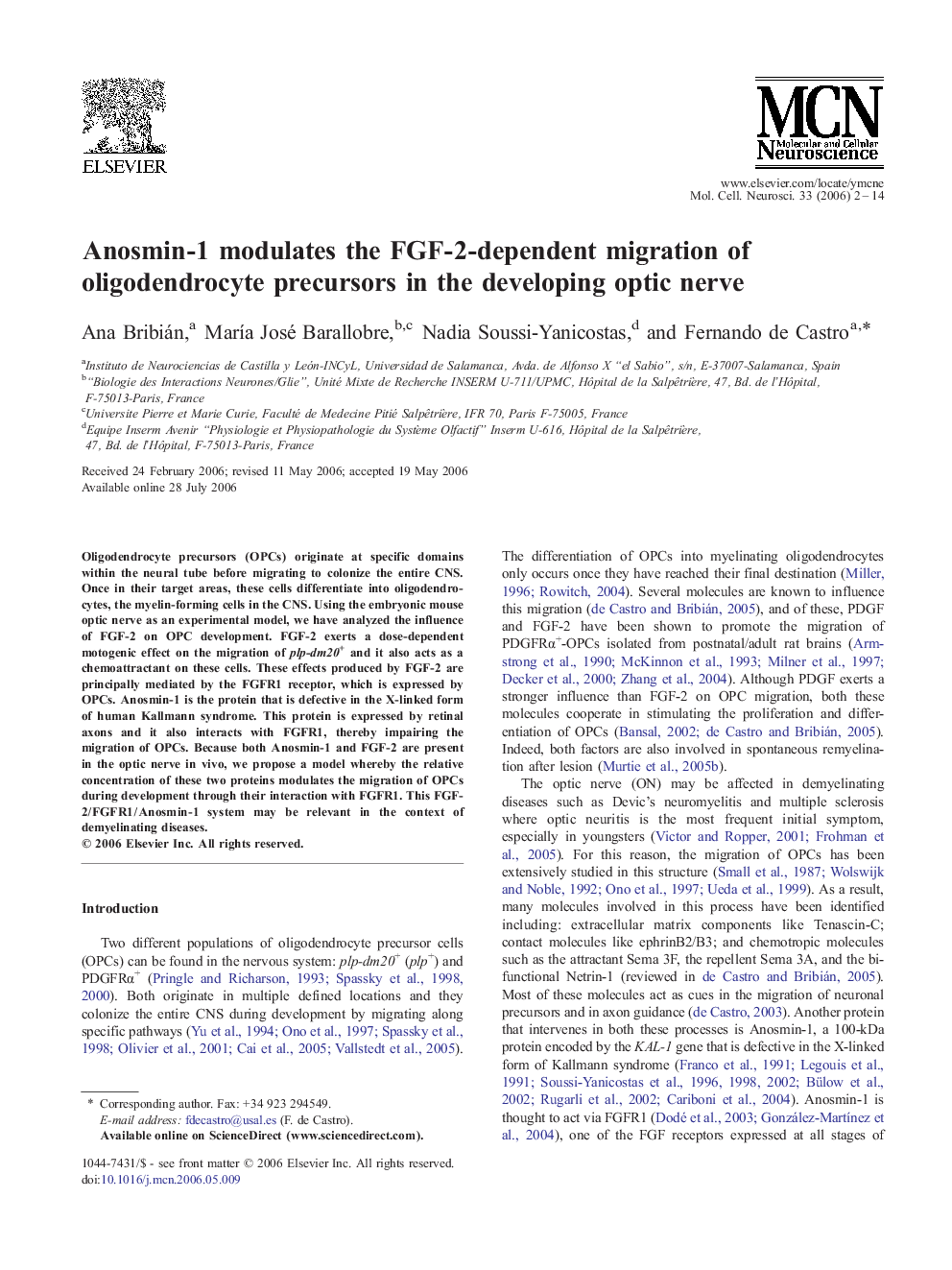| Article ID | Journal | Published Year | Pages | File Type |
|---|---|---|---|---|
| 10956749 | Molecular and Cellular Neuroscience | 2006 | 13 Pages |
Abstract
Oligodendrocyte precursors (OPCs) originate at specific domains within the neural tube before migrating to colonize the entire CNS. Once in their target areas, these cells differentiate into oligodendrocytes, the myelin-forming cells in the CNS. Using the embryonic mouse optic nerve as an experimental model, we have analyzed the influence of FGF-2 on OPC development. FGF-2 exerts a dose-dependent motogenic effect on the migration of plp-dm20+ and it also acts as a chemoattractant on these cells. These effects produced by FGF-2 are principally mediated by the FGFR1 receptor, which is expressed by OPCs. Anosmin-1 is the protein that is defective in the X-linked form of human Kallmann syndrome. This protein is expressed by retinal axons and it also interacts with FGFR1, thereby impairing the migration of OPCs. Because both Anosmin-1 and FGF-2 are present in the optic nerve in vivo, we propose a model whereby the relative concentration of these two proteins modulates the migration of OPCs during development through their interaction with FGFR1. This FGF-2/FGFR1/Anosmin-1 system may be relevant in the context of demyelinating diseases.
Related Topics
Life Sciences
Biochemistry, Genetics and Molecular Biology
Cell Biology
Authors
Ana Bribián, MarÃa José Barallobre, Nadia Soussi-Yanicostas, Fernando de Castro,
